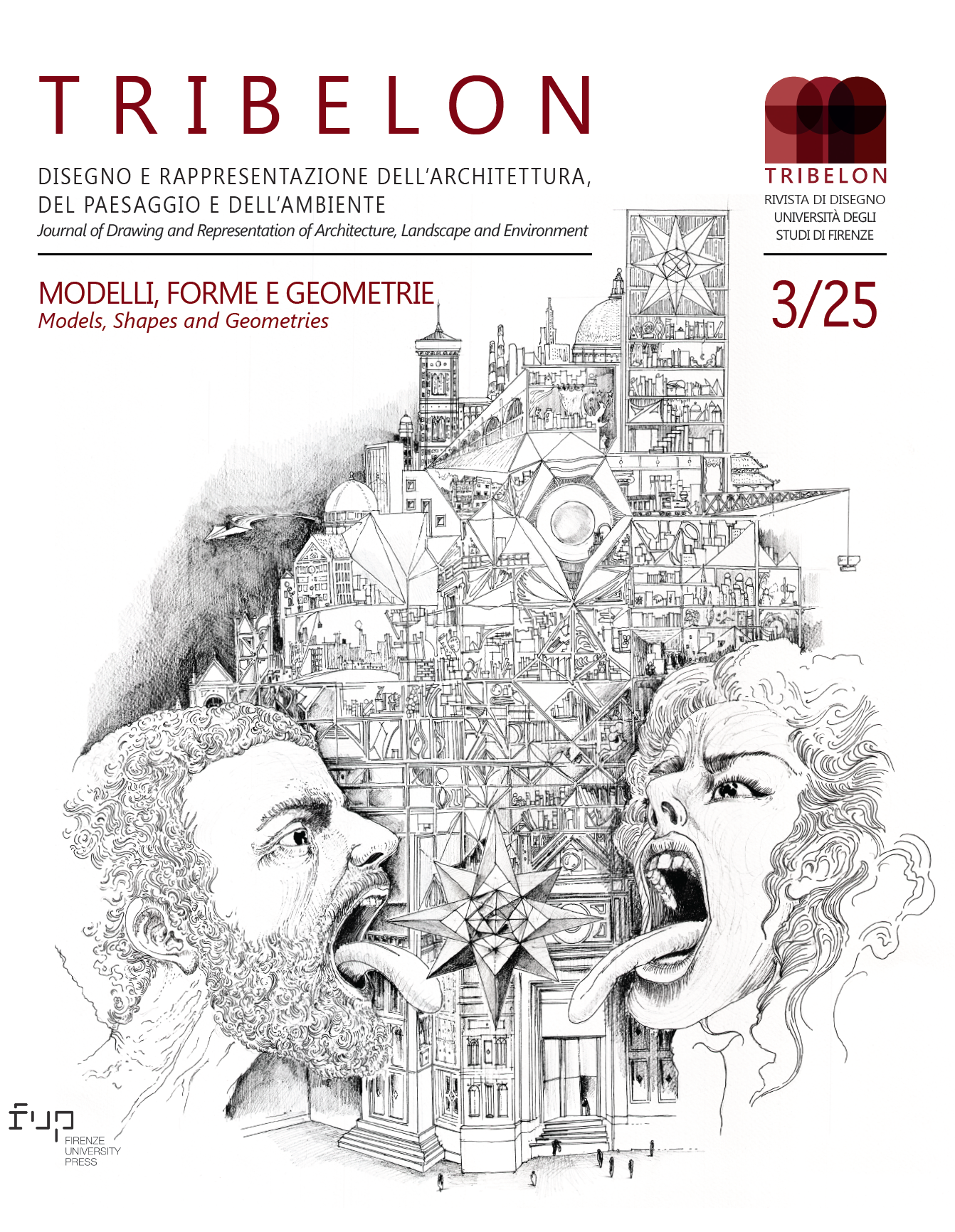Published 2025-06-09
Keywords
- Geometry and Architecture,
- Geometry as Metalanguage,
- Architectural Geometry and AI,
- Geometry Education in Architecture
How to Cite
Copyright (c) 2025 Luigi Cocchiarella

This work is licensed under a Creative Commons Attribution 4.0 International License.
Abstract
Albeit Architecture is not mere Geometry, much of Architecture is about Geometry. Either in real shapes, or in representational models, or in theoretical terms. Three simple questions should suffice to illustrate the point. What would a cathedral be, without its geometric feature? What would a BIM model collapse in, without its geometric framework?
What would architectural theory be based on, without its reference to geometry of space? That is, looking through an ideal infrared lens, Geometry is revealed everywhere in the architectural field, from the dawn of time, and throughout the different
technological eras. And not only in the architectural field, as René Descartes officially highlighted, establishing Geometry at the base of the nexus between logical (λόγος) and visual (γραφή) thinking1, in the last decades widely reconfirmed, also at the computational test. This dual nature, making Geometry working as a metalanguage2, so beneficial in agglutinating the multi-disciplinary field of Architecture, is even more to be considered when facing the challenges promised by AI (fig. 1), either in research or in the professional world, and especially in Geometry education, which is still our priority mission. Then, a further question seems to emerge. What would AI based architectural design be without Geometry? This paper aims at discussing some of the implications related to these topics, including some simple generative tests made with Midjourney and ComfyUI, and an instant tip from Chat GPT.
References
- A. Baricco, The Game, Einaudi, Torino 2018.
- C. B. Boyer, A History of Mathematics, John Wiley and Sons, New York 1968.
- L. Cocchiarella, Geometry and Graphics in Spatial Invention: Among Mind, Hand, and Digital Means, in Journal for Geometry and Graphics, X, 2006, 2, pp. 183–197.
- L. Cocchiarella, La “forma” oltre il “codice”: ambiente architettonico, teoria, rappresentazione, Academia Universa Press, Milano 2009.
- D. Costantino, IArchitettura. Intelligenza artificiale e architettura tra dialogo e sperimentazione, Gangemi Editore, Roma 2023.
- S. Dehaene, How We Learn. The New Science of Education and the Brain, Penguin Books, United Kingdom 2020.
- M. del Campo (ed.), Artificial Intelligence in Architecture, John Wiley & Sons, Hoboken 2024.
- O. Etzioni, D. Weld, A Soft-Box Based Interface to the Internet, in Communications of the ACM, XXXVII, 1994, 7, pp. 72-76.
- R. Evans, The Projective Cast. Architecture and Its Three Geometries, The MIT Press, Cambridge, Massachusetts – London 1995.
- G. Glaeser, K. Polthier, Bilder der Mathematik, Spectrum, Heidelberg 2009.
- M. Hemmerling, L. Cocchiarella (eds.), Informed Architecture. Computational Strategies in Architectural Design, Springer, Cham 2018.
- L. Hovestadt, U. Hirschberg, O. Fritz(eds.), Atlas of Digital Architecture, Birkhäuser, Basel 2020.
- L. Hovestadt, Beyond the Grid. Architecture and Information Technology. Applications of a Digital Architectonic, Birkhäuser, Basel-Boston-Berlin 2010.
- H. F. Mallgrave, L'empatia degli spazi. Architettura e neuroscienze, a cura di A. Gattara, Raffaello Cortina Editore, Milano 2015.
- L. March, P. Steadman, The Geometry of Environment. An Introduction to Spatial Organization in Design, RIBA, London 1971.
- N. Nilsson, Artificial Intelligence: a New Synthesis, Morgan Kaufman, Burlington MA 1998.
- H. Pottmann et al., Architectural Geometry, Bentley Institute Press, Exton PA 2007.
- S. Quintarelli (ed.), Intelligenza artificiale. Cos’è davvero, come funziona, che effetti avrà. Prefazione di Piero Angela, Bollati Boringhieri, Torino 2020.
- S. Robinson, J. Pallasmaa (a cura di), La mente in architettura. Neuroscienze, incarnazione e il futuro del design, traduzione e cura dell'edizione italiana di M. Zambelli, Firenze University Press, Firenze 2022.
- S. Russel, P. Norvig, Artificial Intelligence: a Modern Approach, 4th Edition, Pearson Education, London 2020.
- S. Serres, Les Origines de la géométrie, Flammarion, Paris 1993.
- J.C. Ye, Geometry of Deep Learning. A Signal Processing Perspective, Springer, Singapore 2022.


